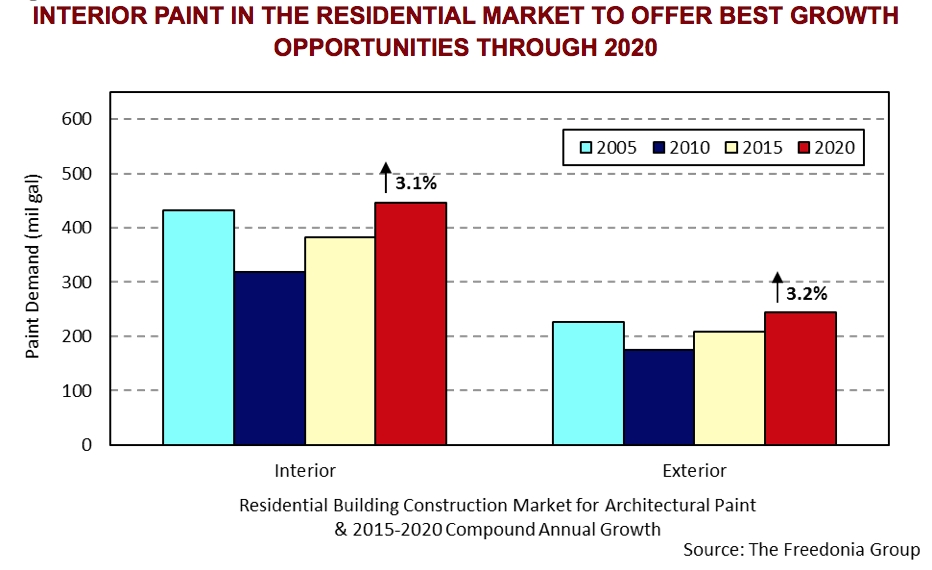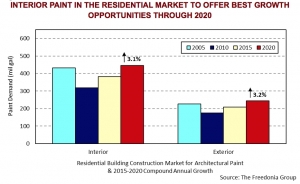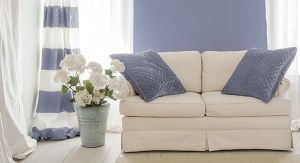03.03.17
Demand for interior paint is forecast to grow 2.9% per year to 535 million gallons in 2020, advancing in line with the overall architectural paint market. Growth can be attributed to positive outlooks for both new construction and sales of existing homes. Increased consumer confidence will also drive more improvement and repair activity, creating additional opportunities for interior paint products going forward. These and other trends are presented in Architectural Paint Market in the US, a new study from The Freedonia Group, a Cleveland-based industry research firm.

Interior paint can be divided into several product categories, including gloss and semigloss paint, flat finish paints, undercoats and primers, and stains and sealers, among others. According to analyst Ellen Kriz, “Demand for gloss and semigloss paints is forecast to post the fastest gains through 2020 at a 3.3% annual rate. Growth will occur at the expense of flat finish paint since gloss and semigloss products exhibit greater durability, scratch resistance, and washability than flat finishes.”
While gloss and semigloss paints offer performance advantages over flat finishes, flat finish paints remain cost-effective for surfaces not subject to high traffic or significant wear and tear, such as ceilings and hallways. It is also more challenging to formulate low-VOC gloss paints that maintain optimum performance.

While gloss and semigloss paints offer performance advantages over flat finishes, flat finish paints remain cost-effective for surfaces not subject to high traffic or significant wear and tear, such as ceilings and hallways. It is also more challenging to formulate low-VOC gloss paints that maintain optimum performance.




